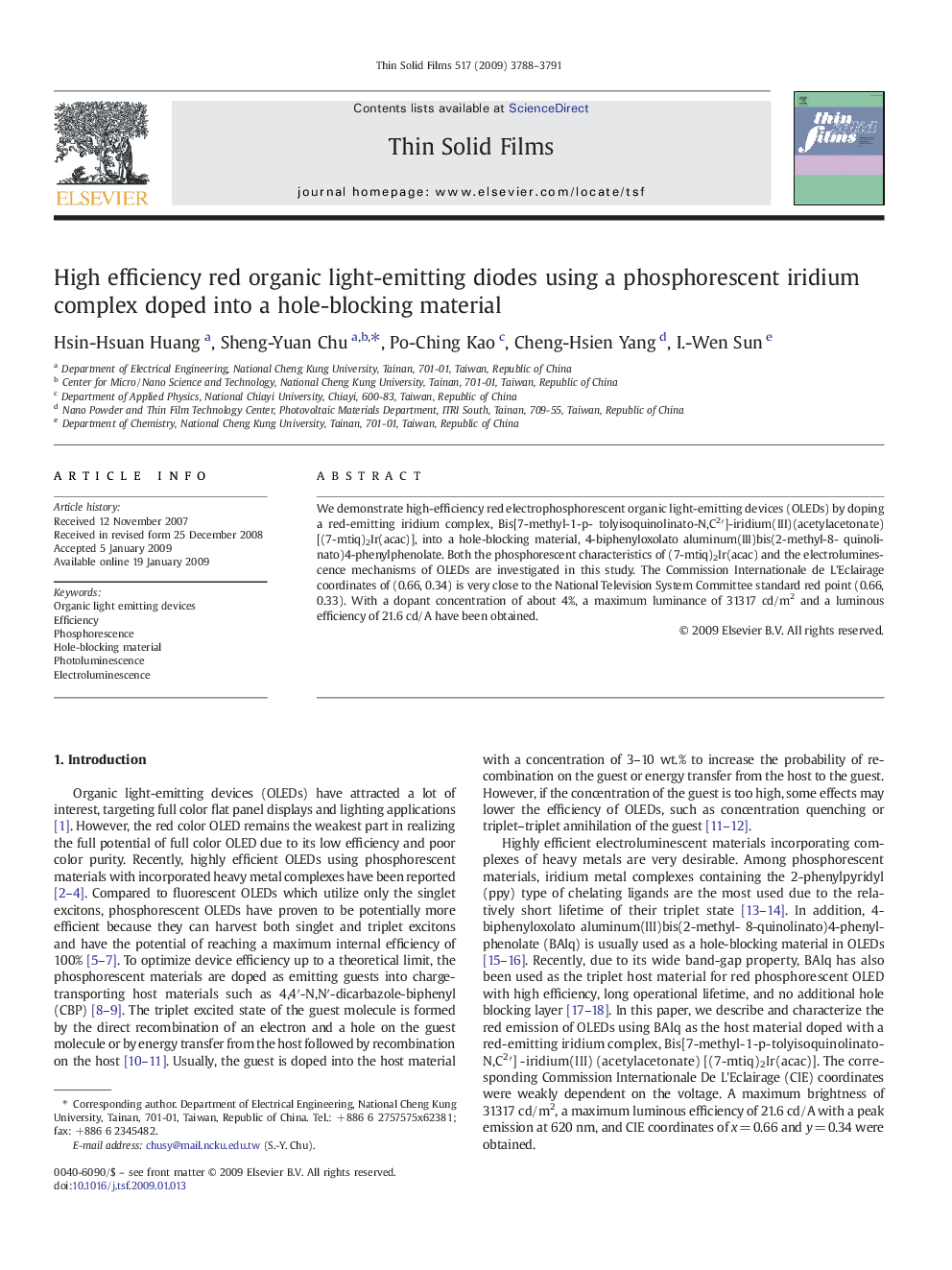| Article ID | Journal | Published Year | Pages | File Type |
|---|---|---|---|---|
| 1671958 | Thin Solid Films | 2009 | 4 Pages |
We demonstrate high-efficiency red electrophosphorescent organic light-emitting devices (OLEDs) by doping a red-emitting iridium complex, Bis[7-methyl-1-p- tolyisoquinolinato-N,C2′]-iridium(III)(acetylacetonate) [(7-mtiq)2Ir(acac)], into a hole-blocking material, 4-biphenyloxolato aluminum(III)bis(2-methyl-8- quinolinato)4-phenylphenolate. Both the phosphorescent characteristics of (7-mtiq)2Ir(acac) and the electroluminescence mechanisms of OLEDs are investigated in this study. The Commission Internationale de L'Eclairage coordinates of (0.66, 0.34) is very close to the National Television System Committee standard red point (0.66, 0.33). With a dopant concentration of about 4%, a maximum luminance of 31317 cd/m2 and a luminous efficiency of 21.6 cd/A have been obtained.
